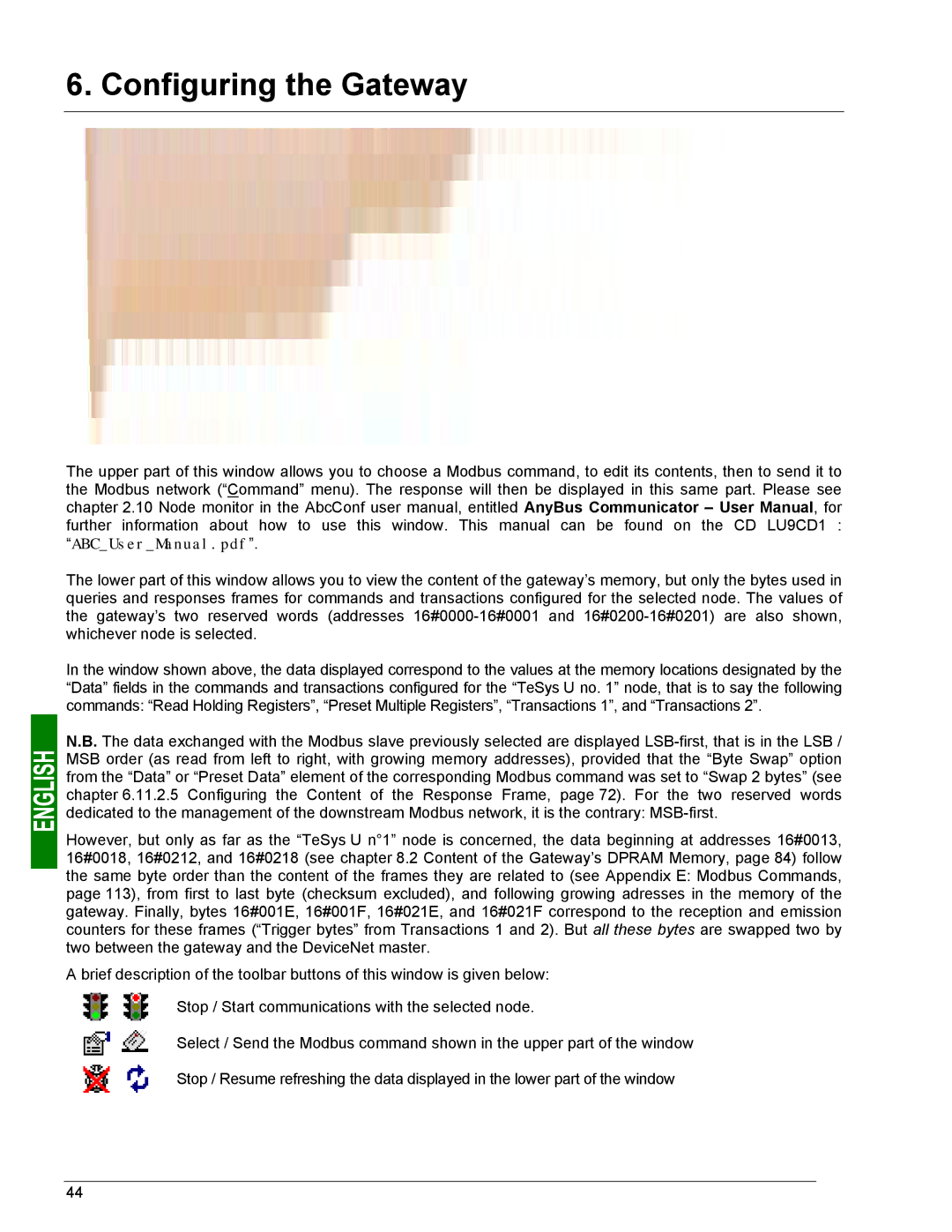
6. Configuring the Gateway
The upper part of this window allows you to choose a Modbus command, to edit its contents, then to send it to the Modbus network (“Command” menu). The response will then be displayed in this same part. Please see chapter 2.10 Node monitor in the AbcConf user manual, entitled AnyBus Communicator – User Manual, for further information about how to use this window. This manual can be found on the CD LU9CD1 : “ABC_User_Manual.pdf”.
The lower part of this window allows you to view the content of the gateway’s memory, but only the bytes used in queries and responses frames for commands and transactions configured for the selected node. The values of the gateway’s two reserved words (addresses
In the window shown above, the data displayed correspond to the values at the memory locations designated by the “Data” fields in the commands and transactions configured for the “TeSys U no. 1” node, that is to say the following commands: “Read Holding Registers”, “Preset Multiple Registers”, “Transactions 1”, and “Transactions 2”.
N.B. The data exchanged with the Modbus slave previously selected are displayed
However, but only as far as the “TeSys U n°1” node is concerned, the data beginning at addresses 16#0013, 16#0018, 16#0212, and 16#0218 (see chapter 8.2 Content of the Gateway’s DPRAM Memory, page 84) follow the same byte order than the content of the frames they are related to (see Appendix E: Modbus Commands, page 113), from first to last byte (checksum excluded), and following growing adresses in the memory of the gateway. Finally, bytes 16#001E, 16#001F, 16#021E, and 16#021F correspond to the reception and emission counters for these frames (“Trigger bytes” from Transactions 1 and 2). But all these bytes are swapped two by two between the gateway and the DeviceNet master.
A brief description of the toolbar buttons of this window is given below:
Stop / Start communications with the selected node.
Select / Send the Modbus command shown in the upper part of the window
Stop / Resume refreshing the data displayed in the lower part of the window
44
